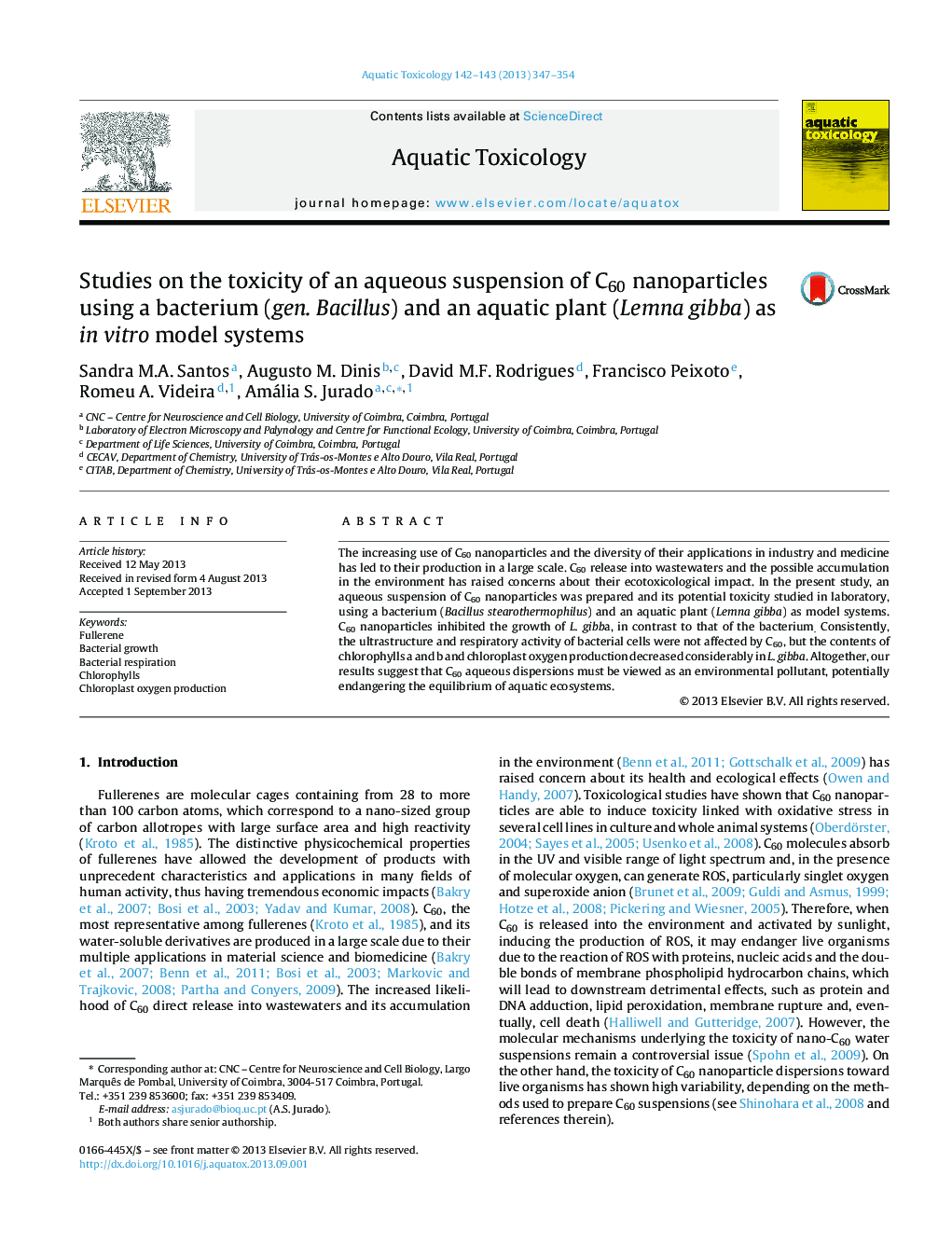| Article ID | Journal | Published Year | Pages | File Type |
|---|---|---|---|---|
| 4529452 | Aquatic Toxicology | 2013 | 8 Pages |
•C60 aqueous suspension has no effect on growth and respiration of a Bacillus sp.•C60 aqueous suspension inhibits growth and photosynthetic activity of Lemna gibba.•A decrease in chlorophylls and an anomalous Chl a/Chl b ratio are induced by C60.
The increasing use of C60 nanoparticles and the diversity of their applications in industry and medicine has led to their production in a large scale. C60 release into wastewaters and the possible accumulation in the environment has raised concerns about their ecotoxicological impact. In the present study, an aqueous suspension of C60 nanoparticles was prepared and its potential toxicity studied in laboratory, using a bacterium (Bacillus stearothermophilus) and an aquatic plant (Lemna gibba) as model systems. C60 nanoparticles inhibited the growth of L. gibba, in contrast to that of the bacterium. Consistently, the ultrastructure and respiratory activity of bacterial cells were not affected by C60, but the contents of chlorophylls a and b and chloroplast oxygen production decreased considerably in L. gibba. Altogether, our results suggest that C60 aqueous dispersions must be viewed as an environmental pollutant, potentially endangering the equilibrium of aquatic ecosystems.
